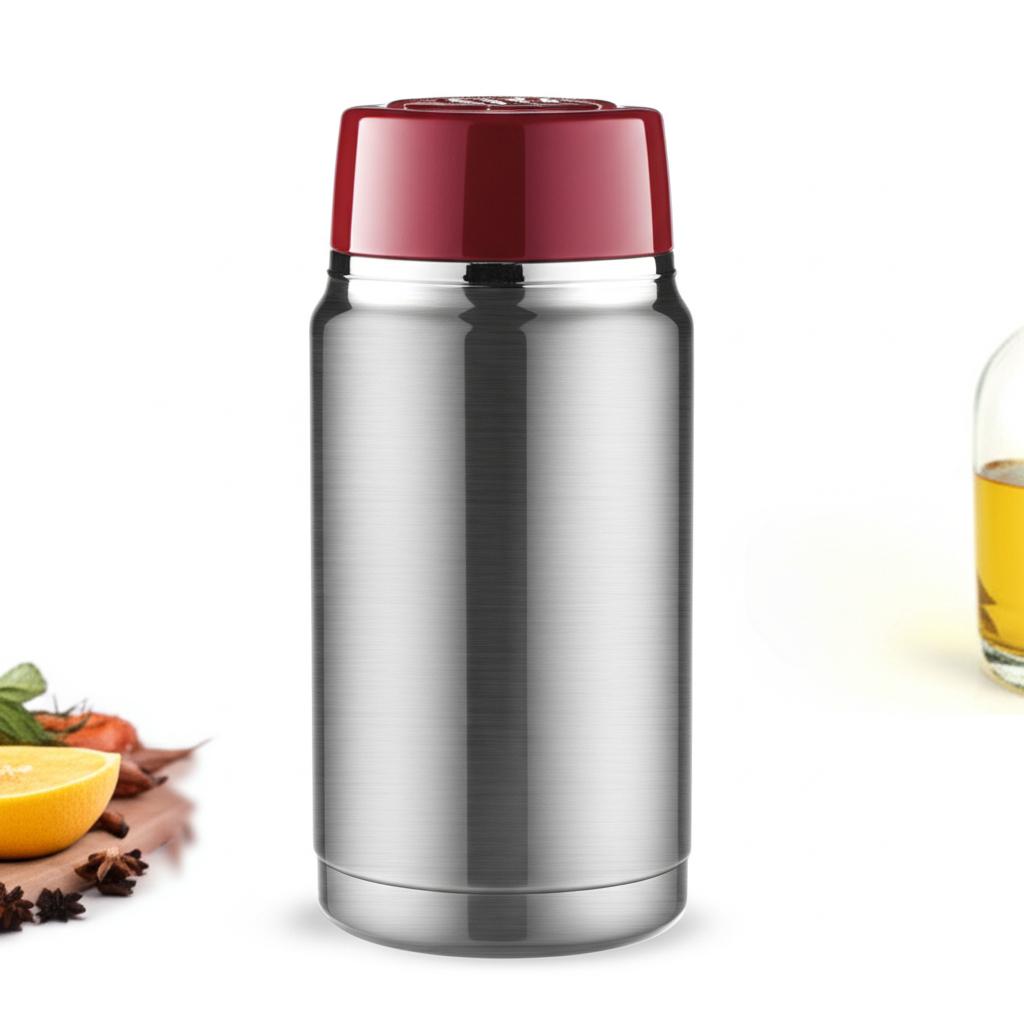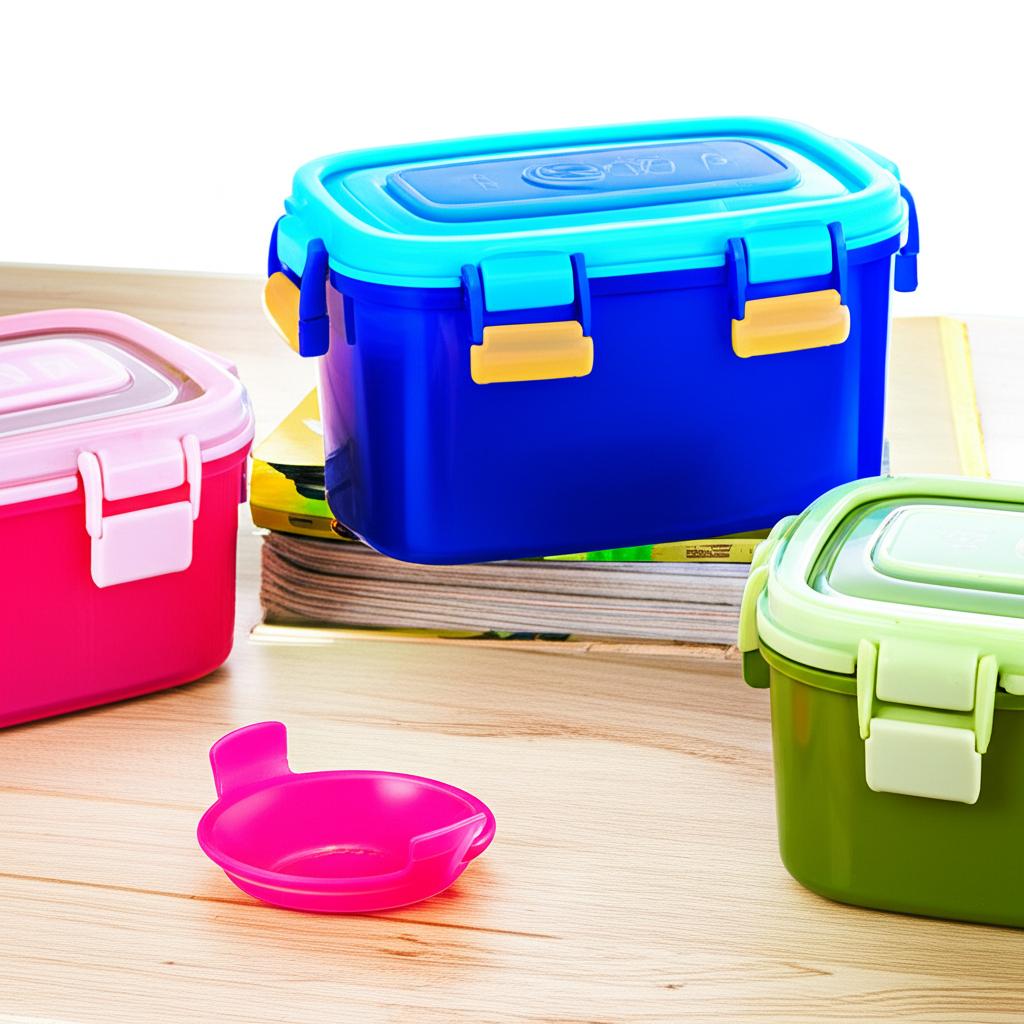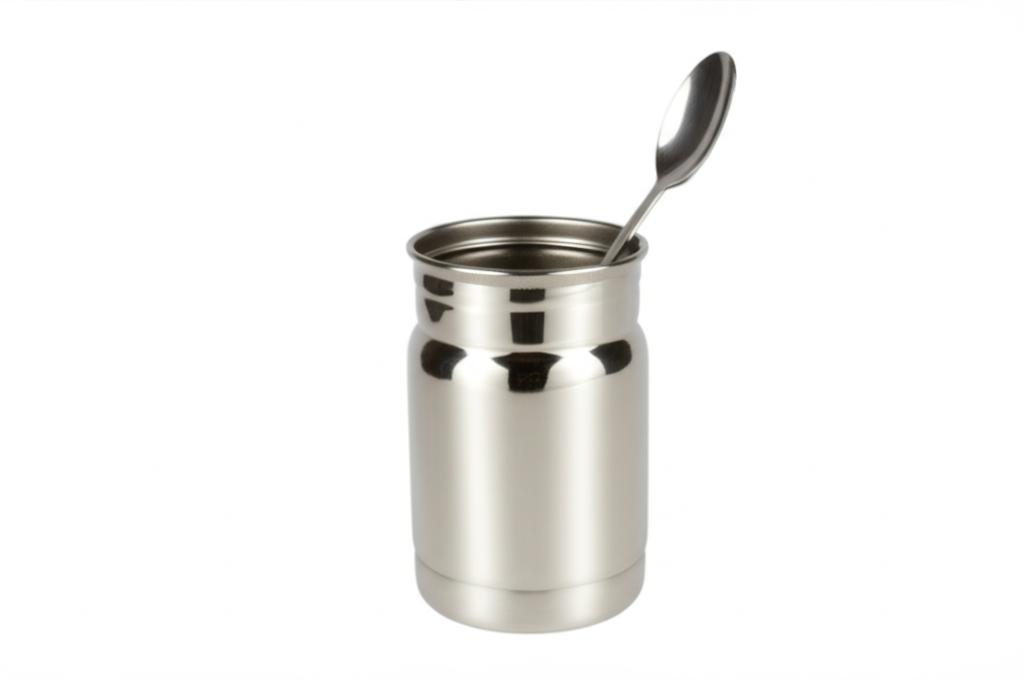
Tired of scrambling for lunch ideas every morning? Do you dream of healthy, delicious, and perfectly portioned meals ready to grab and go? If so, then a bento box lunch container for meal prep might just be the game-changer you’ve been searching for. Far more than just a simple lunchbox, a bento box is a brilliantly designed system that can revolutionize the way you approach packed lunches, making meal preparation a breeze and healthy eating an everyday reality.
In this comprehensive guide, we’ll dive deep into everything you need to know about bento boxes for meal prep. We’ll explore why they’re so effective, how to choose the perfect one, and most importantly, how to use them to elevate your meal prep game, save time, reduce waste, and truly enjoy your midday meals.
What Exactly is a Bento Box? More Than Just a Lunch Pail!
Before we delve into its meal prep superpowers, let’s clarify what a bento box actually is. Originating in Japan centuries ago, a “bento” (弁当) traditionally refers to a single-portion takeout or home-packed meal. What sets it apart is its meticulous organization: food items are carefully arranged in compartments, often in visually appealing ways, to create a balanced, aesthetically pleasing, and convenient meal.
Modern bento boxes, particularly those designed for meal prep, take this concept and run with it. They typically feature multiple compartments, sometimes removable, allowing you to separate different food items – think main course, side dish, fruit, and perhaps a small treat – preventing them from mingling and keeping everything fresh until lunchtime. It’s this compartmentalization that makes them incredibly versatile for preparing diverse and balanced meals ahead of time.
Why a Bento Box is Your Meal Prep Game-Changer
When it comes to efficient and effective meal preparation, a high-quality bento box lunch container for meal prep offers a host of benefits that traditional containers just can’t match. Here’s why they’re an absolute must-have for anyone serious about healthy eating and saving time:
1. Masterful Portion Control
One of the biggest advantages of bento boxes is their inherent ability to help you manage portions. Each compartment naturally guides you in portioning out different food groups – a protein here, a complex carb there, plenty of veggies, and a small fruit serving. This structure makes it incredibly easy to create balanced meals without overeating, which is fantastic for weight management or just maintaining a healthy diet. You’re less likely to grab extra snacks when your meal is already thoughtfully curated and satisfying.
2. Keeps Food Fresh and Separate
No one likes soggy sandwiches or fruit that’s absorbed the smell of last night’s stir-fry. Bento boxes, with their individual compartments and often leak-proof seals, solve this problem beautifully. Your salad stays crisp, your dressing stays separate until ready to use, and your snacks remain uncrushed. This ensures that every component of your meal tastes as it should, making your packed lunch far more enjoyable.
3. Encourages Variety and Balanced Meals
The multi-compartment design practically begs you to include a variety of foods. Instead of just a single dish, you can pack a protein, a grain, different colored vegetables, and a piece of fruit. This naturally leads to more nutritious and visually appealing meals, ensuring you’re getting a wider range of vitamins and minerals. Plus, variety keeps things interesting, preventing meal prep burnout!
4. Eco-Friendly and Budget-Friendly
By preparing your meals in a reusable bento box, you drastically cut down on single-use plastics from takeout containers or pre-packaged snacks. This is not only great for the planet but also for your wallet. Eating out regularly adds up quickly. Packing your own bento meals saves you a significant amount of money over time, allowing you to invest in higher quality ingredients or save for other goals.
5. Time-Saving Convenience
Imagine waking up, grabbing your pre-packed bento from the fridge, and heading out the door. That’s the power of bento meal prep. Dedicating a few hours on a Sunday to prepare meals for the week frees up your busy mornings and ensures you always have a healthy option readily available. No more last-minute dash to the vending machine or settling for unhealthy fast food.
6. Boosts Creativity and Mindful Eating
The act of packing a bento can be surprisingly meditative and creative. Arranging your food beautifully can make the meal more appealing and enjoyable. Furthermore, knowing you’ve put thought and effort into your lunch can encourage more mindful eating, helping you savor each bite.
Choosing the Right Bento Box Lunch Container for Meal Prep
With a myriad of options on the market, selecting the perfect bento box can feel a bit overwhelming. Consider these factors to find one that fits your lifestyle and meal prep needs:
Materials Matter: Which One is Right for You?
- Plastic: Often the most affordable and lightweight option. Look for BPA-free, food-grade plastic. Many are microwave, dishwasher, and freezer safe. Be mindful of staining with certain foods (like tomato sauce) and potential wear over time.
- Stainless Steel: Extremely durable, long-lasting, and free from plastics. Great for hot or cold foods (though not microwave-safe). They can be a bit heavier and don’t offer built-in dividers as easily, though some come with removable silicone inserts. Excellent for eco-conscious users.
- Glass: Non-porous, so it won’t stain or retain odors. Microwave and oven safe (without the lid), and easy to clean. Glass containers can be heavier and are breakable, making them less ideal for active commutes unless well-protected.
- Silicone: Flexible, lightweight, and often collapsible, saving space when not in use. Microwave and dishwasher safe. Great for snacks or smaller portions, but may not offer rigid separation for all food types.
- Bamboo Fiber/Composites: An eco-friendly alternative, lightweight and often stylish. Check for durability and whether they are truly food-safe and free of harmful binders. Not typically microwave or dishwasher safe.
Key Features to Look For:
- Leak-Proof Seals: Absolutely crucial for liquids or saucy foods. Look for silicone gaskets and secure latches.
- Number of Compartments: Do you need 2, 3, 4, or more? Consider the variety of foods you typically pack. Some have removable dividers, offering flexibility.
- Capacity/Size: Think about your appetite and what a typical meal looks like for you. Are you packing for a child, a light eater, or someone with a hearty appetite?
- Microwave, Dishwasher, Freezer Safe: These features add immense convenience to your meal prep routine. Always check the product specifications.
- Insulation: Some bento boxes come with insulated layers or bags to keep food hot or cold for longer, though most rely on external insulated lunch bags.
- Portability & Stackability: If you’re carrying multiple boxes or have limited storage space, consider how easily they stack or fit into your bag.
Shape and Style: Does it Fit Your Vibe?
Bento boxes come in all shapes – rectangular, square, round, and even multi-tiered. While largely a personal preference, consider how easily the shape fits into your bag and if it allows for creative packing. Some even come in fun colors and designs, making lunchtime feel a little more special!
Mastering Meal Prep with Your Bento Box
Now that you’ve got the perfect bento box lunch container for meal prep, let’s talk strategy! Here’s how to make the most of it:
1. Plan Your Meals Thoughtfully
Before you even start cooking, plan what you’ll pack for each day. Consider a protein, a complex carbohydrate, plenty of vegetables, and a healthy fat. Look for recipes that are meal-prep friendly – those that hold up well in the fridge for a few days. Think roasted chicken and veggies, quinoa salads, pasta dishes, or hearty grain bowls.
2. Batch Cook Like a Pro
Dedicate one day (often Sunday) to batch cooking your meal components. Cook a large batch of grains (rice, quinoa, couscous), roast a tray of mixed vegetables, grill or bake a protein source (chicken breast, tofu, hard-boiled eggs), and prepare salad bases. This way, you have all the building blocks ready to assemble.
3. Assembly Line Efficiency
Once your components are cooked and cooled, set up an assembly line. Line up your clean bento boxes and start filling each compartment systematically. This makes the process quick and ensures consistency.
4. Think About Texture and Separation
- Keep Wet from Dry: Always put dressings, sauces, and very wet ingredients in a separate, smaller leak-proof container (many bento boxes come with these) or a dedicated, tightly sealed compartment. Add them right before eating.
- Crispy Stays Crispy: If you have something meant to be crispy (like croutons or nuts), pack them separately or on top in a non-sealed compartment.
- Layering: For salads, put dressing at the bottom (if using a dedicated dressing compartment), then harder vegetables, then greens on top to prevent sogginess.
5. Prioritize Food Safety
- Cool Down Completely: Always let cooked food cool down to room temperature before packing it into your bento box and refrigerating. Packing hot food can create condensation, leading to bacterial growth.
- Refrigerate Promptly: Get your packed bento boxes into the fridge within two hours of cooking.
- Use By Dates: Most prepared meals are good for 3-4 days in the refrigerator. Plan your cooking schedule accordingly.
- Insulated Bag: Always transport your bento box in an insulated lunch bag with an ice pack, especially if you won’t be refrigerating it immediately upon arrival.
6. Embrace Variety (and Theme Days!)
To avoid meal prep boredom, mix things up!
* Mediterranean Monday: Hummus, pita, cucumber, cherry tomatoes, olives, feta.
* Taco Tuesday: Seasoned ground meat/beans, corn salsa, shredded lettuce, cheese, mini tortillas.
* Pasta Perfection: Cold pasta salad, or warm pasta with sauce (heated separately if needed) and a side of steamed broccoli.
* Sushi/Rice Bowl: Cooked rice, edamame, avocado, cooked shrimp/tofu, seaweed snacks.
* Breakfast for Lunch: Hard-boiled eggs, fruit, whole-grain muffin, yogurt with granola.
Common Meal Prep Mistakes to Avoid
Even with the best bento box, a few missteps can derail your meal prep efforts. Steer clear of these common pitfalls:
- Packing Hot Food: As mentioned, this is a food safety no-no. Always cool food completely before sealing.
- Forgetting Leak-Proofing: Don’t trust non-sealed compartments with liquids. Gravy, salad dressing, and juicy fruits need secure containers.
- Overpacking: While bento boxes encourage variety, don’t cram them so full that components get crushed or leak. Leave a little breathing room.
- Ignoring Textures: Packing wet and dry items together is a recipe for a soggy, unappetizing lunch.
- Lack of Variety: Eating the same exact meal five days in a row can lead to burnout. Switch up proteins, veggies, and grains.
- Winging It: Without a plan, your “meal prep” quickly turns into chaotic cooking. Take 15 minutes to plan your weekly menu.
- Not Cleaning Promptly: Don’t let your bento box sit dirty. Clean it soon after use to prevent smells, stains, and bacterial growth.
- Choosing the Wrong Container: A bento box that’s too small, not leak-proof, or made of material that doesn’t suit your needs (e.g., non-microwaveable when you need to reheat) will lead to frustration.
Comprehensive FAQ About Bento Box Lunch Containers for Meal Prep
Q1: Are all bento boxes leak-proof?
A1: No, absolutely not! Many bento boxes, especially traditional Japanese styles or very simple plastic ones, are not designed to be leak-proof. If you plan to pack anything with liquid, like dressings, sauces, or juicy fruits, it is crucial to look for bento boxes explicitly labeled as “leak-proof” or those that come with separate, small leak-proof containers for wet items. Always check for secure latches and silicone seals.
Q2: Can I put hot food directly into a bento box?
A2: It’s best practice to let hot food cool down completely to room temperature before packing it into your bento box and refrigerating. Packing hot food can create condensation inside the sealed container, which can lead to bacterial growth and make your food go bad faster. Plus, it can potentially warp some plastic containers.
Q3: How long do meals stay fresh in a bento box?
A3: Generally, properly prepared and stored meals in a bento box will stay fresh for 3-4 days in the refrigerator. This depends on the specific ingredients. Cooked proteins and grains are typically good for this duration. Fresh salads might only last 1-2 days if dressed, but undressed components can last longer. Always use your best judgment and an insulated bag with an ice pack for transport.
Q4: Are bento boxes microwave safe?
A4: Many plastic and silicone bento boxes are microwave safe, but not all. Stainless steel and glass bento boxes are generally NOT microwave safe (glass without the lid is usually fine). Always check the manufacturer’s instructions or look for symbols indicating “microwave safe” before putting your bento in the microwave.
Q5: How do I clean my bento box?
A5: Most modern plastic and silicone bento boxes are dishwasher safe (top rack recommended). Stainless steel and glass are also generally dishwasher safe. For bento boxes with silicone seals, it’s often a good idea to remove the seals periodically and wash them by hand to prevent mold growth in crevices. Always follow the manufacturer’s cleaning instructions.
Q6: What’s the best material for a bento box?
A6: The “best” material depends on your needs.
* Plastic: Affordable, lightweight, often microwave/dishwasher safe.
* Stainless Steel: Durable, eco-friendly, no plastic, but heavier and not microwave safe.
* Glass: Non-porous, good for reheating, but heavier and breakable.
* Silicone: Flexible, lightweight, often collapsible.
Consider your priorities: weight, durability, reheating needs, and eco-friendliness.
Q7: Can bento boxes help with weight loss?
A7: Yes, they absolutely can! Bento boxes are excellent tools for portion control, which is a key component of weight management. By using the separate compartments, you can easily ensure you’re packing balanced meals with appropriate portion sizes of protein, carbohydrates, and vegetables, helping you avoid overeating and make healthier food choices.
Q8: What are some creative food ideas for bento box meal prep?
A8: The possibilities are endless!
* Main: Grilled chicken or tofu, lentil salad, pasta primavera, mini quiches, hard-boiled eggs.
* Sides: Roasted sweet potatoes, steamed broccoli, edamame, cucumber slices, cherry tomatoes, baby carrots.
* Grains: Quinoa, brown rice, whole-wheat couscous, pita bread.
* Fruit: Berries, apple slices, grapes, orange segments.
* Snacks/Treats: Nuts, cheese cubes, yogurt, hummus, granola, small cookie.
Try themed bentos like “Taco Tuesday” (deconstructed tacos) or “Mediterranean Medley” (hummus, pita, olives, veggies).
Q9: Do I need an insulated lunch bag for my bento box?
A9: Yes, it’s highly recommended, especially if you won’t have immediate access to a refrigerator. An insulated lunch bag, paired with an ice pack, will help keep your food at a safe temperature (below 40°F / 4°C for cold foods and above 140°F / 60°C for hot foods) until lunchtime, preventing bacterial growth and ensuring freshness.
Q10: How many compartments should my bento box have?
A10: It depends on your meal style. A 2-compartment box might work for a main and a side. A 3-compartment box is very versatile for a main, side, and fruit/snack. Four or more compartments are great for those who love variety or need very strict portion separation for different food groups. Many bento boxes also offer removable dividers, giving you flexibility.
Conclusion: Embrace the Bento Lifestyle!
Investing in a quality bento box lunch container for meal prep is more than just buying another piece of kitchen gear; it’s investing in your health, your time, and your finances. It’s an invitation to take control of your meals, explore new flavors, reduce waste, and bring a little joy and mindfulness to your midday break.
By following the tips and insights shared in this guide, you’ll be well on your way to mastering the art of bento meal prep. Say goodbye to sad desk lunches and hello to a world of organized, delicious, and perfectly portioned meals, ready whenever you are. Happy prepping!



